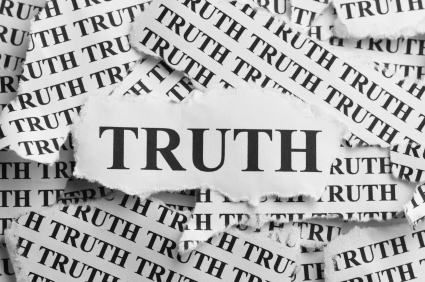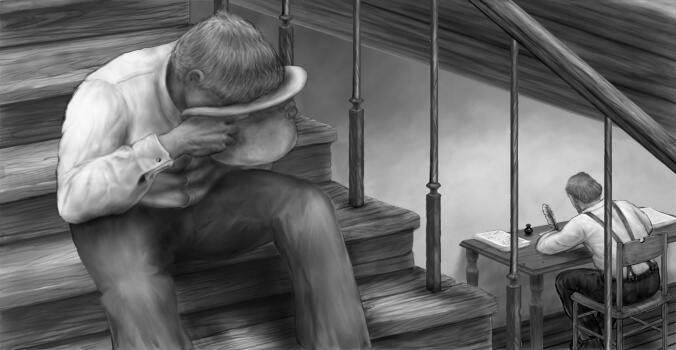- Thank your investigator for having you back.
Today we’re going to talk about something even more important than our previous topics. One of the central tenets of the correlated church is the concept that “families are forever,” also called, “eternal progression.”
Today we want to focus on the concepts around being an eternal family, and how you can know that this is mostly a marketing technique instead of something you might risk losing by questioning the authorities of the church.
Elder Parley P. Pratt records in his autobiography the first instance of the concept of eternal marriage:
“It was at this time that I received from him the first idea of eternal family organization, and the eternal union of the sexes.”
Autobiography of Parley P. Pratt[1]
Eternal Relationships and the Blessing of Having a Prophet of God[2]
This is a very sweet sentiment, and is featured heavily[3] in church[4] materials[5].
Certainly, most individuals want to enjoy the sociality of their families for as long as possible, but let us inspect closer what is actually being said.
What does an Eternal Family entail?
Parley P. Pratt married Mary Ann Frost on the 14th of May 1837, two years before the above quote. His first wife died the 25th of March, 1837.
So an eternal family comprises of someone marrying both in this life, and getting re-married. This is not a surprise to most members as this is generally understood today.
But imagine, for a moment, what then this next life is going to be like, with husbands having two or three wives. To imagine that it is the same as this life is not rational.
Many members say that they will accept polygamy in the next life when they are perfected.
- If either of you have a family member or relation who has said as much, please share that story.
But this is not doctrinal, and is, in fact, contrary to scripture[6]. This very scripture was used by former prophets against the anti-polygamy organizations in Utah who resisted polygamy in this life.
Further, Parley Pratt married a third wife, concurrent with Mary Ann Frost, on the 24 July, 1843. Elizabeth Brotherton. He would go on to marry an additional 10 wives in this life in parallel, as it were, by 1847.
As you can see, Parley’s idea of eternal marriage, as presented to him by Joseph Smith, was a very different concept than what is put forward today. At the same time as Parley penned those words, he was referencing the idea of having many polygamous wives.
Source[7]
- EXAMPLE: If a friend of yours told you that there was a special deal going on at a store, and that you could have the most delicious cupcake ever, you might take your friend’s word that the cupcake is wonderful. You might even try that cupcake. People might quote that friend on TV commercials or billboards. But if you go to the store, and found out you had to have not one, but a dozen cupcakes in order to eat one, and that cupcake was comprised of very different ingredients than you originally thought, might you feel that your friend left out some important details?
Parley’s statement about marriage that is used by the church in its official marriage guide is similar to the friend failing to mention the requirements of having the cupcake [“Eternal Marriage”].
Eternal Marriage is Required
Brigham Young said, “The only men who become Gods, even the sons of God, are those who enter into polygamy” (Journal of Discourses 11:269).
Apologists such as FAIRLDS[8] claim that this quote is out of context. Let us, then, cite a fuller extent of the quote:
“I wish here to say to the Elders of Israel, and to all the members of this Church and kingdom, that it is in the hearts of many of them to wish that the doctrine of polygamy was not taught and practiced by us…It is the word of the Lord, and I wish to say to you, and all the world, that if you desire with all your hearts to obtain the blessings which Abraham obtained, you will be polygamists at least in your faith, or you will come short of enjoying the salvation and the glory which Abraham has obtained.”
Apologists then wrestle the definition of “polygamists at least in their faith,” claiming that Brother Brigham was implying that one simply needed to believe in polygamy in one’s heart, and not to live it. But let’s look at the next line:
“‘We will pass along in the Church without obeying or submitting to it in our faith or believing this order, … we will not, therefore, be polygamists lest we should fail in obtaining some earthly honor, character and office, etc,’—the man that has that in his heart, and will continue to persist in pursuing that policy, will come short of dwelling in the presence of the Father and the Son, in celestial glory.”
The implication here is clear. One must be willing to live the practice of polygamy and not put worldly treasures or offices above living the law given. Brigham is not saying they need not practice it, but rather to put polygamy into their hearts and love the principle.
- Ask you investigator if the love of the doctrine of polygamy is in their hearts. Note: This may cause some contention with married couples if the male answers too quickly.
The church clearly teaches that polygamy was part of the doctrine. Gordon B. Hinckley said: “In this dispensation, the Lord commanded some of the early Saints to practice plural marriage”[9].
The church does not deny, even in the 21st Century, that plural marriage was a command of God. Members who are challenged by the principle should pray and ask God if it is true after carefully studying this principle.
Polygamist details
Before we ask you to pray and ask God about this principle, we’d like you to study it out in your mind first[10]. We will provide some of the details of what is included in this principle.
First wives do not have to know about additional wives.
Even thought D&C 132 says, “And again, as pertaining to the law of the priesthood—if any man espouse a virgin, and desire to espouse another, and the first give her consent, and if he espouse the second, and they are virgins, and have vowed to no other man, then is he justified;”[11]. It is clear that Joseph married many wives without the consent of his wife.
“I think Emma always regretted having any hand in getting us into such trying circumstances. But she need not have blamed herself for that… for it would have been the same with or without her consent… I have never repented the act that made me a plural wife… of Joseph Smith and bound me to him for time and all eternity” –Emmily Partridge, teenage bride of Joseph Smith.
Teenage brides were common.
Another common belief is that the women all consented or that they were “of age.” Joseph Smith himself married girls as young as 14 (Helen Mar Kimball), and had several teenage wives including two pairs of teenage sisters.
Other church leaders who took teenage wives:
1[12]
2[13]
3[14]
4[15]
5[16]
6[17]
7[18]
8[19]
9[20]
10[21]
11[22]
12[23]
13[24]
14[25]
15[26]
16[27]
17[28]
18[29]
19[30]
19[31]
20[32]
21[33]
22[34]
23[35]
24[36]
25[37]
26[38]
27[39]
28[40]
29[41]
30[42]
31[43]
32[44]
33[45]
34[46]
35[47]
36[48]
37[49]
38[50]
39[51]
40[52]
41[53]
42[54]
Plural marriage produced fewer children, not more, and women did not outnumber men.
We cannot summarize it better than this website[55]. Let us review it with you.
Eternal Marriage included trading up.
This video[56] summarizes it best, but there is good evidence (including genealogical records) that Brigham Young allowed wives to trade up to higher men in the priesthood.
You are not actually sealed.
The idea that one could travel the difficult and coarse terrain of this world for eighty years with a spouse, only to have her taken from one by a “higher priesthood,” may seem shocking. We understand the confusion this can cause. Unfortunately, we need to talk about it even further.
When Joseph Smith set up the eternal marriage rules, they included something called the Second Anointing[57]. This second anointing is what is meant in the Doctrine and Covenants when one is promised that as long as one does not murder innocent blood in this life, one can commit any sin in this life and still be saved (D&C 132:19).
But almost no members receive this second anointing in this life. Instead, they are simply “sealed” together. Listen carefully to the next ceremony you attend and you will hear that they are not “sealed” for time and all eternity, but they are sealed that they may be sealed for time and all eternity.
Without the second anointing, a husband and wife are not truly sealed.
Polyandry
It may have been under this logic that Joseph and Brigham both married Henry Jacob’s wife, Zina[58], while he was still alive. Yes, part of “Eternal Families” includes a wife having multiple husbands.
As one can see, it could be the case that after living a fruitful life with a spouse, one could arrive to the celestial kingdom only to be informed that their spouse is trading up (since they weren’t sealed together anyway, never having had the second anointing). That person, now in the celestial kingdom, could end up a servant to his spouse who is now sealed for the rest of time and all eternity to another man.
- Note: the doctrine of eternal servants is probably new to most members. Refer them here so they can see that the idea that someone can be sealed as an eternal servant is doctrine.
That is part of the definition of “eternal families” according to the doctrine.
We have covered a lot about “eternal families” in the last dispensations. We have not even touched on subjects for additional reading such as that eternal families can include prostitutes[59], family members, and rapists[60].
We invite you to consider these things carefully, and then pray and ask God if polygamy is a true principle as revealed. When you know that polygamy is not a true principle, we feel that you will know that Joseph is not a true prophet, as a true prophet would not institute a false principle so thoroughly. When you know that Joseph is not a true prophet, you will know that the modern church is also not true.
The Law of Chastity
The Law of Chastity in the early days of the church, as you can see, is significantly different than what we are expected to live today–with wife swapping, and dating women while still married in order to find additional wives.
In addition, masturbation was never mentioned as a sin until 1950[61], after the Kinsey study on sex revealed that masturbation was normal. Why God would not see fit to reveal such a pivotal and private sin for over 120 years of the church’s existence, even when the activity was reported to prophets, seems odd to us.
We invite you think about masturbation, review the literature, and decide for yourself if this invented “sin” is actually against the laws of God, or if the leaders of the church created it as some sort of control technique to ensure guilt on the vast majority of the membership.
- Bare your testimony of masturbation as a healthy, normal thing for humans. Invite your companion to share his or her witness of masturbation as not something that God restricted in any book of scripture.









